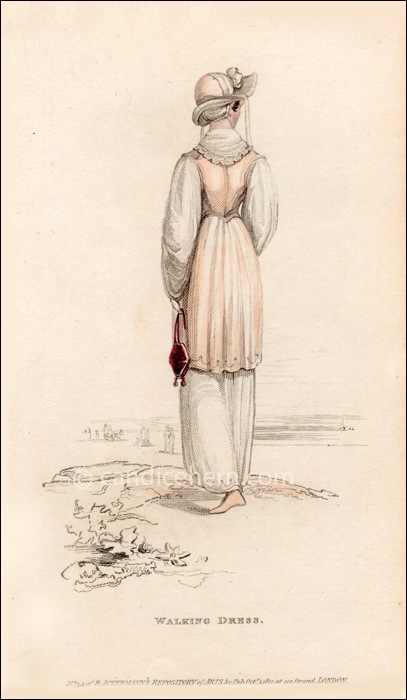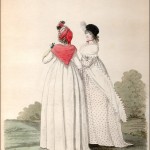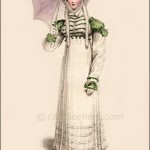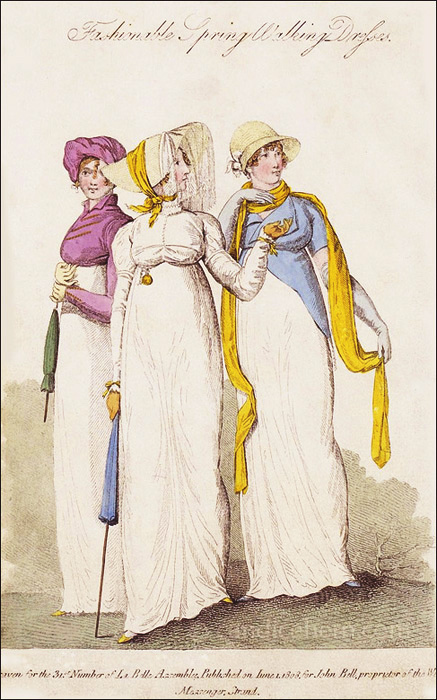Ackermann’s Repository of Arts, October 1811.
“Walking Dress.”
I love prints that depict the model walking along the seaside, or perhaps it is a lake. The tiny background figures are charming: the people walking, one with a dog, a couple riding in a small carriage or dogcart, and a tiny sailboat on the water. Love those little details.
The description mentions a red velvet parasol, which is nowhere to be seen. Without the red parasol, this is really a very monochrome ensemble. One wonders if the engraver left out the parasol, so instead the reticule was painted bright red to infuse that pop of needed color.
It is interesting that at the end of the description it is noted that some may consider the low waist extreme. But 1811 is full of waistlines high, low, and in between. Perhaps the fashionable modistes had decided it was time to relinquish the high Empire waist and began experimenting with lower waistlines. But the public wasn’t ready to give up that Regency silhouette just yet. Going forward, waistlines stayed high for another dozen years or so, when they begin to move down again, permanently.
The print is described in the magazine as follows:
“A round French robe, with bishop sleeve, of fine jaconet muslin, ornamented at the feet and wrists with a crescent border of needlework. A square neckerchief, of fine muslin, in folds. A short Roman coat, of amber or bright buff sarsnet, without sleeves, cut low round the bosom, and trimmed with a fall of French lace; ornamented round the bottom, and up the front, with a crescent border, corresponding with the robe, in shaded chenille. A mountain hat, composed of the same material, and ornamented with white crape. A foundling cap of the same, with an autumnal flower in front. Half-boots of buff kid; parasol of crimson velvet; and gloves of pale Limeric. We take upon us to remark, that the length of the waist in this plate may be considered in the extreme, as few of our fair country-women seem disposed to depart from a becoming mediocrity in this particular.”








